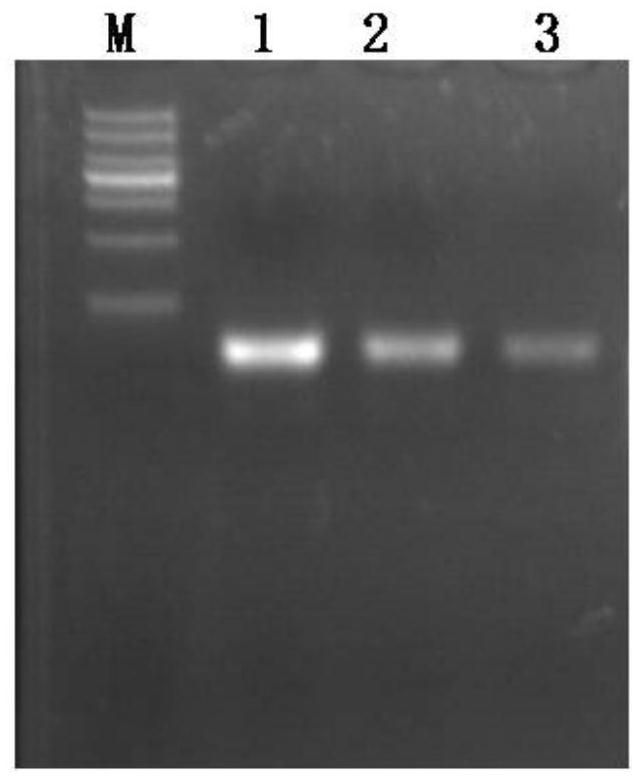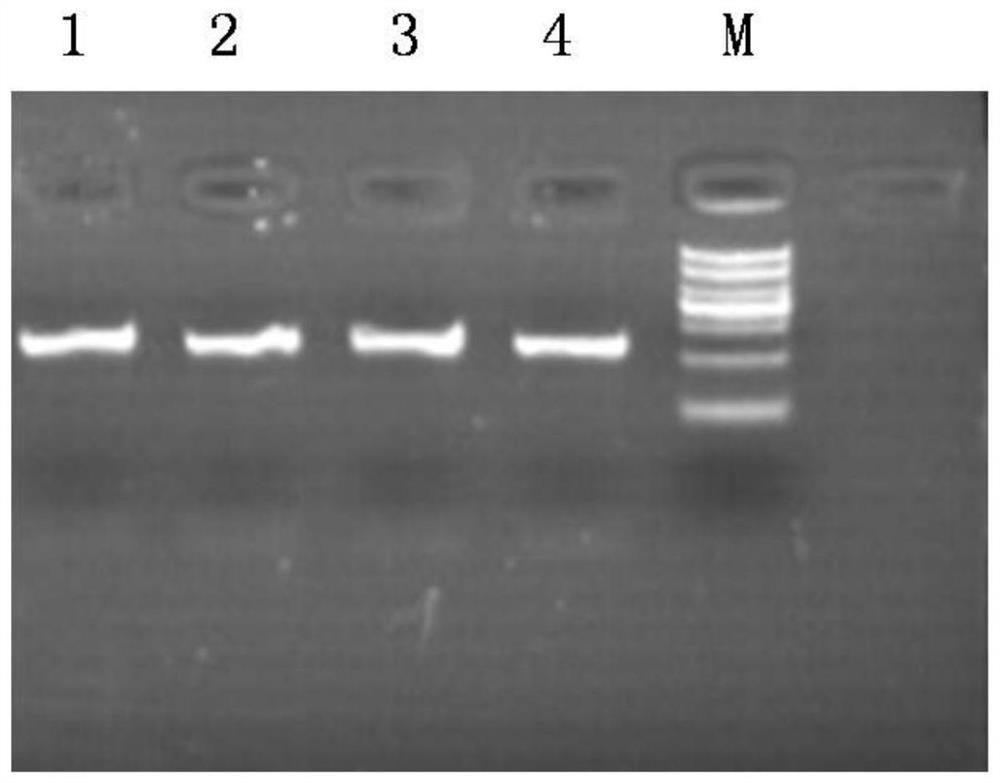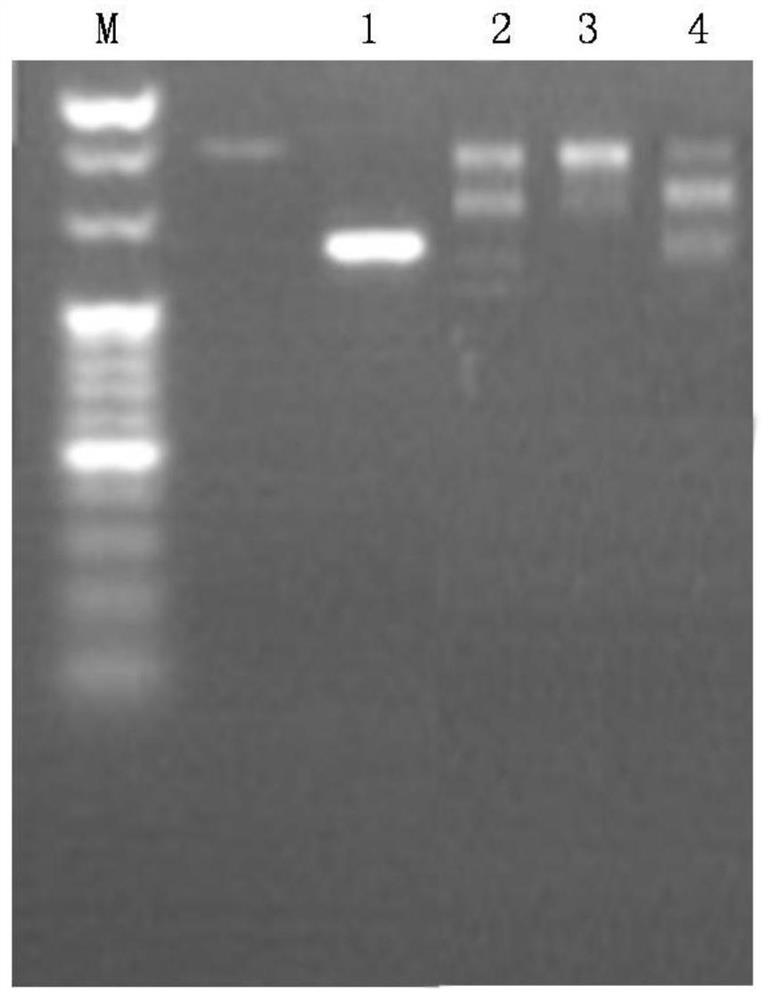Evaluation method of linker connection efficiency in construction of next-generation sequencing library
A technology of next-generation sequencing library and adapter ligation, which is applied in the field of evaluating the efficiency of adapter ligation in the construction of next-generation sequencing library, and can solve problems such as the inability to accurately obtain the specific percentage of connection
- Summary
- Abstract
- Description
- Claims
- Application Information
AI Technical Summary
Problems solved by technology
Method used
Image
Examples
Embodiment 1
[0034] This specific example provides a method for evaluating adapter ligation efficiency in the construction of a next-generation sequencing library, comprising the following steps:
[0035] (1) Obtain fragment A by PCR amplification, use fragment A as a template, and use L1 and L2 as adapters to construct a next-generation sequencing library. After the adapter ligation is completed, use primers corresponding to adapters L1 and L2 as primers to connect The completed product is used as a template for PCR amplification, and the amplified fragments containing adapter sequences at both ends account for more than 99.999%. The fragments containing adapter sequences at both ends are L1-A-L2, where L1 and L2 are adapters, A is a DNA fragment;
[0036] (2) The method for measuring nucleic acid concentration by qubit is used to detect the nucleic acid concentration of L1-A-L2 constructed in step (1), and convert the nucleic acid concentration of L1-A-L2 into copy number;
[0037] (3) ...
Embodiment 2
[0043] This specific example provides another method for evaluating adapter ligation efficiency in next-generation sequencing library construction, including the following steps:
[0044](1) Use the human genome as a template to carry out PCR amplification to obtain fragment A, the amplified upstream primer sequence is shown in SEQ ID NO: 1, and the downstream primer sequence is shown in SEQ ID NO: 2, using fragment A as a template and L1 , L2 is the adapter for next-generation sequencing library construction. After the adapter ligation is completed, the primers corresponding to the adapters L1 and L2 are used as primers, and the products after the adapter ligation are used as templates for PCR amplification. Amplify until both ends contain adapter sequences Fragments accounted for more than 99.999%, and the fragments containing adapter sequences at both ends are L1-A-L2, where L1 and L2 are adapters, and A is a DNA fragment;
[0045] (2) The method for measuring nucleic acid ...
Embodiment 3
[0049] This specific example provides a method for evaluating adapter ligation efficiency in the construction of a next-generation sequencing library, comprising the following steps:
[0050] (1) Artificially synthesize a fragment containing linker sequences at both ends, which is L1-A-L2, wherein L1 and L2 are linkers, and A is a DNA fragment;
[0051] (2) The method for measuring nucleic acid concentration by qubit is used to detect the nucleic acid concentration of L1-A-L2 constructed in step (1), and convert the nucleic acid concentration of L1-A-L2 into copy number;
[0052] (3) Using L1 and L2 as linkers to construct a library for fragment A, the fragment A is artificially synthesized, and after the library construction is completed, the product of the library construction is purified and recovered to obtain library a;
[0053] (4) Using L1-A-L2 as the standard, carry out serial gradient dilution on the standard L1-A-L2, and then use the primers corresponding to fragment...
PUM
 Login to View More
Login to View More Abstract
Description
Claims
Application Information
 Login to View More
Login to View More - R&D
- Intellectual Property
- Life Sciences
- Materials
- Tech Scout
- Unparalleled Data Quality
- Higher Quality Content
- 60% Fewer Hallucinations
Browse by: Latest US Patents, China's latest patents, Technical Efficacy Thesaurus, Application Domain, Technology Topic, Popular Technical Reports.
© 2025 PatSnap. All rights reserved.Legal|Privacy policy|Modern Slavery Act Transparency Statement|Sitemap|About US| Contact US: help@patsnap.com



